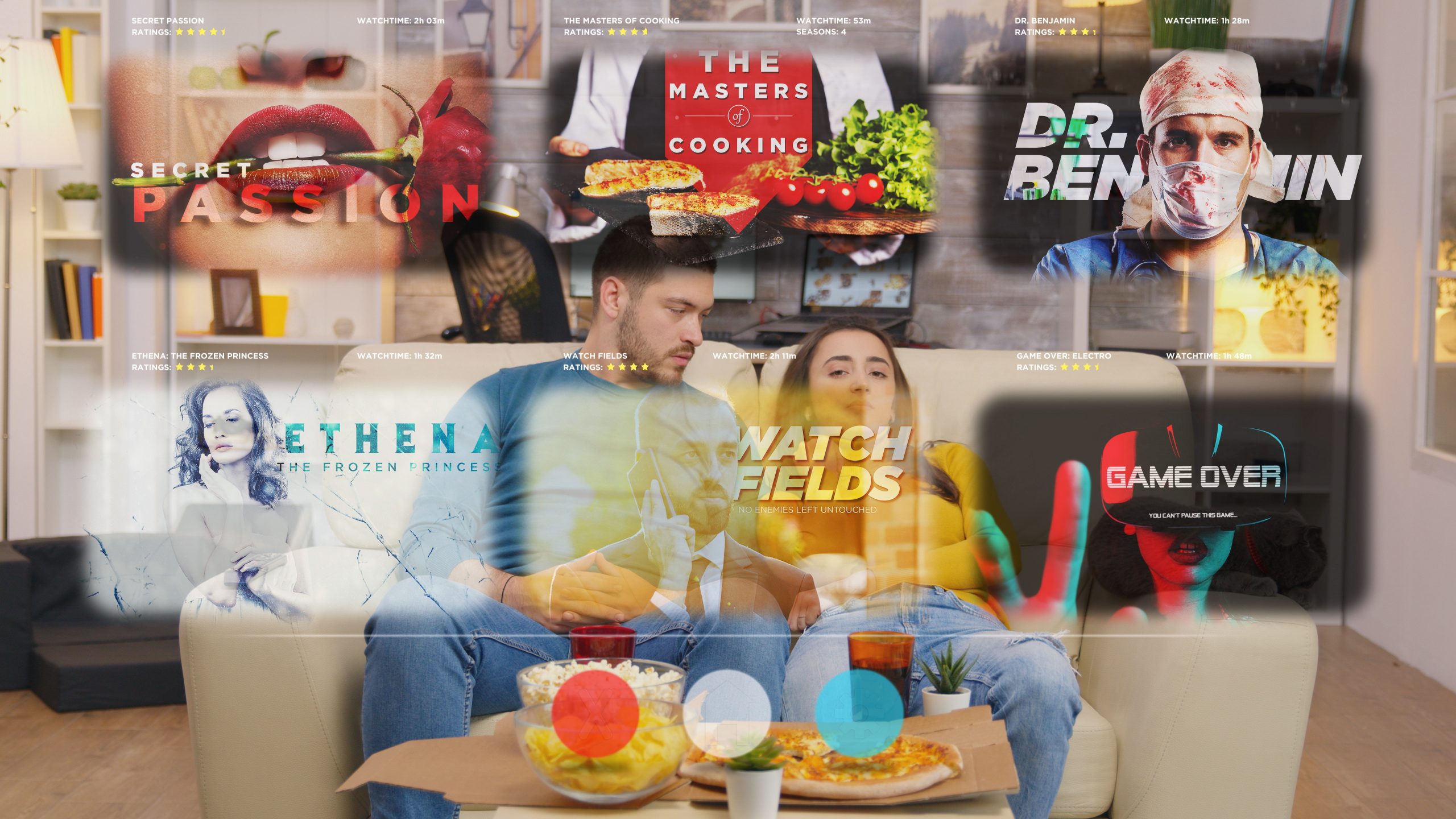Customize customer XP to ensure user satisfaction
Regardless of the type of application or platform used, the quality of the user experience (UX) is essential at all stages of the customer relationship: conversion between visitor and registrant (to a free trial), conversion between a trial and a paid formula, commitment and of course retention.
The competition is tough and the giants of the sector are the intuitive reference for any average user. It is no longer possible to launch an application today that would be similar in terms of experience to what was offered just a few years ago. The bar of expectations is constantly rising.
How can we now personalize the customer experience to ensure user satisfaction, which is the guarantee of user loyalty (and of their communicative enthusiasm, a vector of virality)? In this article, we will discuss a few ideas.
The quality of onboarding is paramount
A user’s first contact with an application is crucial in the adoption of a service.
The new registrant will not be bombarded with a barrage of questions presented in a form with administrative accents. We will favor a quick registration through an existing social account (Facebook, Google) or through a simple email (with confirmation), making sure to set up an extended session formula and a fast and secure method of password recovery (Magic Link, Sms, …). Nothing is more frustrating than having to struggle with a login form when you have forgotten your password.
The onboarding sequence must be as fluid as possible, limited to a few screens to initiate a flow of suggestions. The goal is for the user to find himself as quickly as possible in the engagement phase, with an initial offer that will improve as he interacts.
One step less is as much less friction
Wherever possible, the number of steps required to arrive at a function or content should be reduced.
This concern for fluidity is all the more important on the search screens. Voice commands can save a considerable amount of time compared to a text field, which is why Amazon has integrated its Alexa technology, Google’s Google Assistant function and Apple’s Siri module into their VOD offers. It’s hard to do without it once you’ve experienced it!
Intelligently exploit data to make effective use of A.I.
Artificial intelligence, in the form of Machine Learning (ML), is now part of the toolbox of all content providers. The fundamental objective of ML is to detect behavioral patterns.
To deliver high-performance results, the supervised version of ML must be fed with correctly labeled data. In other words, data quality is crucial for ML performance. Therefore, prior to its implementation, it is necessary to think about the way in which all user interactions will be recorded, while not forgetting to determine their granularity (how far will the criteria that will feed the ML engine go?).
The advantage of ML is that it allows to quickly deliver a relevant experience to a new user by comparing the first data collected during his navigation with clusters of older users with a comparable profile (lookalike audiences). This allows for surprisingly relevant suggestions from the very first user sessions. In this respect, Riplee collaborates with Spideo for the customized development of content recommendation solutions.
Netflix doesn’t settle for the classic categories displayed on the screen. Behind the scenes, nearly 77,000 “alt genres” have been algorithmically composed based on the choices and behavior of more than 200 million users. The granularity of profiling and the colossal size of its user base give Netflix a huge competitive advantage. Each user is welcomed into a digital space whose presentation and content is personalized at every step of the navigation.
The same principle is adopted by competitors, Amazon, Disney+, Apple and others, each time with a 2-step process. Recommendations are made at the crossroads of usage data and data attached to content, which is constantly evolving. It is therefore a dynamic two-entry process. A user’s profile is enriched, while the criteria for content that can be attached to an infinite number of clusters are enriched.
Initially, each new movie added to the Netflix database is manually characterized by a large number of tags (the training manual for this task has no less than 36 pages for several dozen criteria!). Then the criteria are refined by the actual consumption of the viewers.
Netflix’s “alt genres” are as many consumer tribes, with their codes of presentation, from the home page to the film files, and their preferred contents. All this data also informs the creation of new content, according to the potential appetite of viewers, which they do not need to express openly. Everything is deduced from the activity on the platform. The presentation even evolves according to the user’s engagement phase: a film or series presentation visual will not be the same for someone who could still view the content compared to someone who has already consumed it. A user’s story may even determine the actors displayed on a visual, as explained in this article published by Netflix. Everything is dynamic.
One of the key challenges of customization is to avoid choice paralysis at all costs. It is imperative that the viewer be able to find content that satisfies him or her in each session within a reasonable period of time.
Of course, for personalization to make sense, the content provider must have a critical mass of users and a sufficient supply of content to create the consumer clusters mentioned above.
Data with unexpected impact: timing and delivery media
A user’s profile is not simply driven by the nature of the content they view. The timing (time of day, period of the year,…) and the device used also have an influence in the suggestions proposed. Some content is consumed more in the evening on a big screen and others are more suitable for consumption on the move in the middle of the day.
A/B testing is essential
One can have excellent intuition, informed by usage data and competitive intelligence, but when it comes to implementing a user experience modification, it is essential to compare the effects not only with the previous configuration but also, if necessary, between several options, making sure to always test an isolated modification (this can be just the color of a button or the font of a call-to-action), for the conclusions to be relevant. The A/B testing will be performed on a limited (but sufficient) number of users so as not to risk a production release on the whole database.
Source: Netflix via Medium
Netflix runs approximately 250 A/B tests per year, on a sample of approximately 100,000 users. Everything is tested on their platform: the copy, images, videos, presentation templates, and the movement of transitions. Each element can have an influence on the level of audience engagement.
Speed of execution is crucial
If there’s one thing that doesn’t require A/B testing, it’s the speed of the interface execution.
Nothing annoys the user more than a slow interface. This can be caused by poor software performance, which can be corrected as updates are released, but it also depends on hardware performance. You’re sure to notice a significant increase in satisfaction when switching from a first-generation Amazon Fire TV dongle to a newer version, built from better performing components (and including the Alexa feature).
Notifications, to be used with moderation
Notifications (native and/or by email), provided they are relevant and used sparingly, help to strengthen the link with the user and increase his commitment. This being said, some users prefer to do without them and should be given the opportunity to do so.
Personalization combined with marketing automation
The use of “Wish Lists” allows providers to bring the user back to the platform when content is available. The usage profile also allows the creation of personalized newsletters (and/or native notifications) to push relevant suggestions.
Customization, a win-win formula
The quality of personalization, as we have seen, increases engagement, which in turn enhances personalization and informs creative choices. This ever-growing loop is ultimately a win-win formula for both the viewer and the supplier.
By 2018, according to a Monetate study, 93% of companies that said they had deployed an advanced user experience personalization strategy had seen revenue growth.
Of course, it is crucial that the content provider continually expands its offering and constantly adapts the presentation of content to the user’s changing profile, to ensure that the user loses as little time as possible in making a choice. Constantly improving the technical performance of the platform is also crucial, as users have ever higher expectations in terms of application responsiveness. A VOD content provider can therefore never rest on its laurels.


